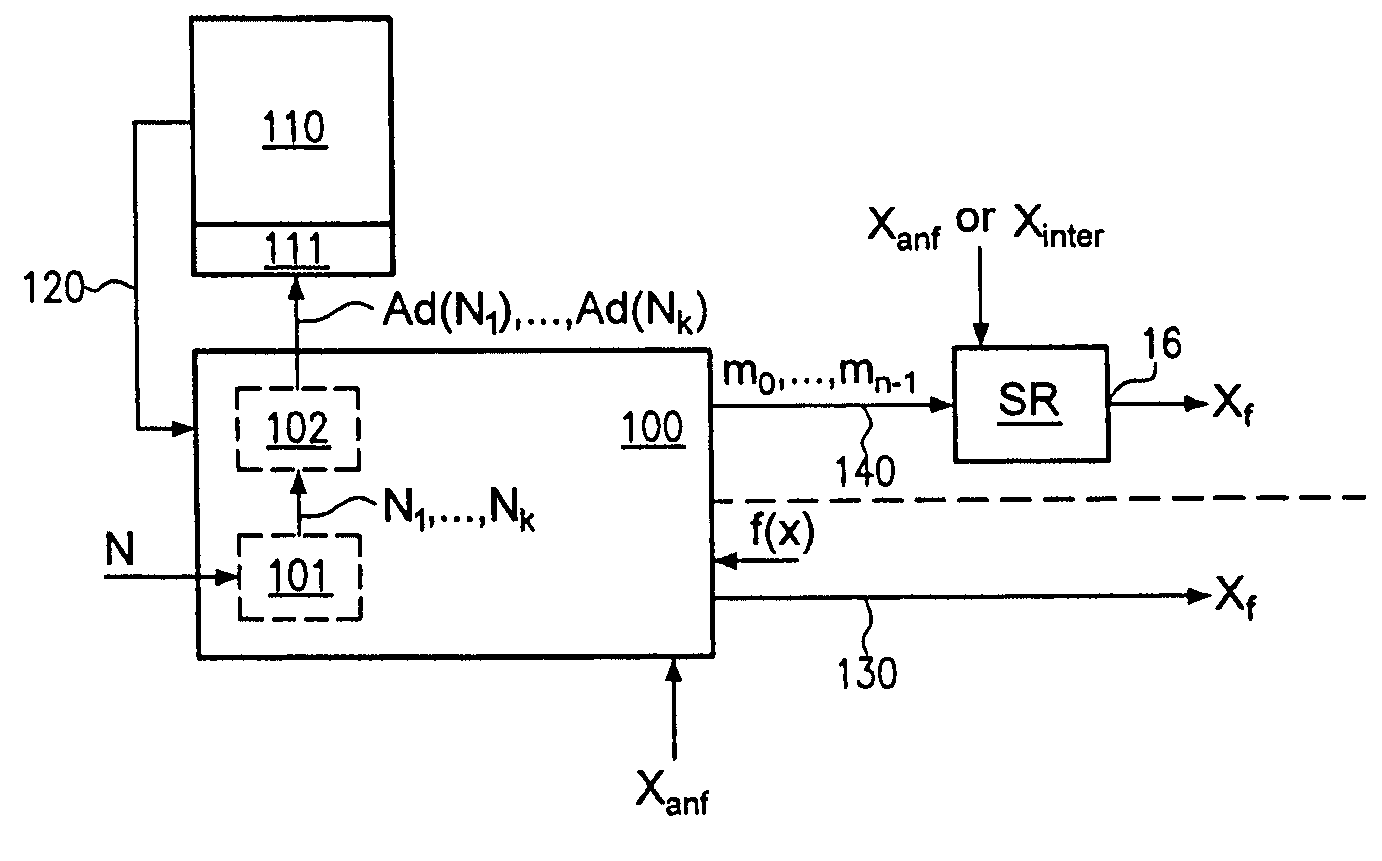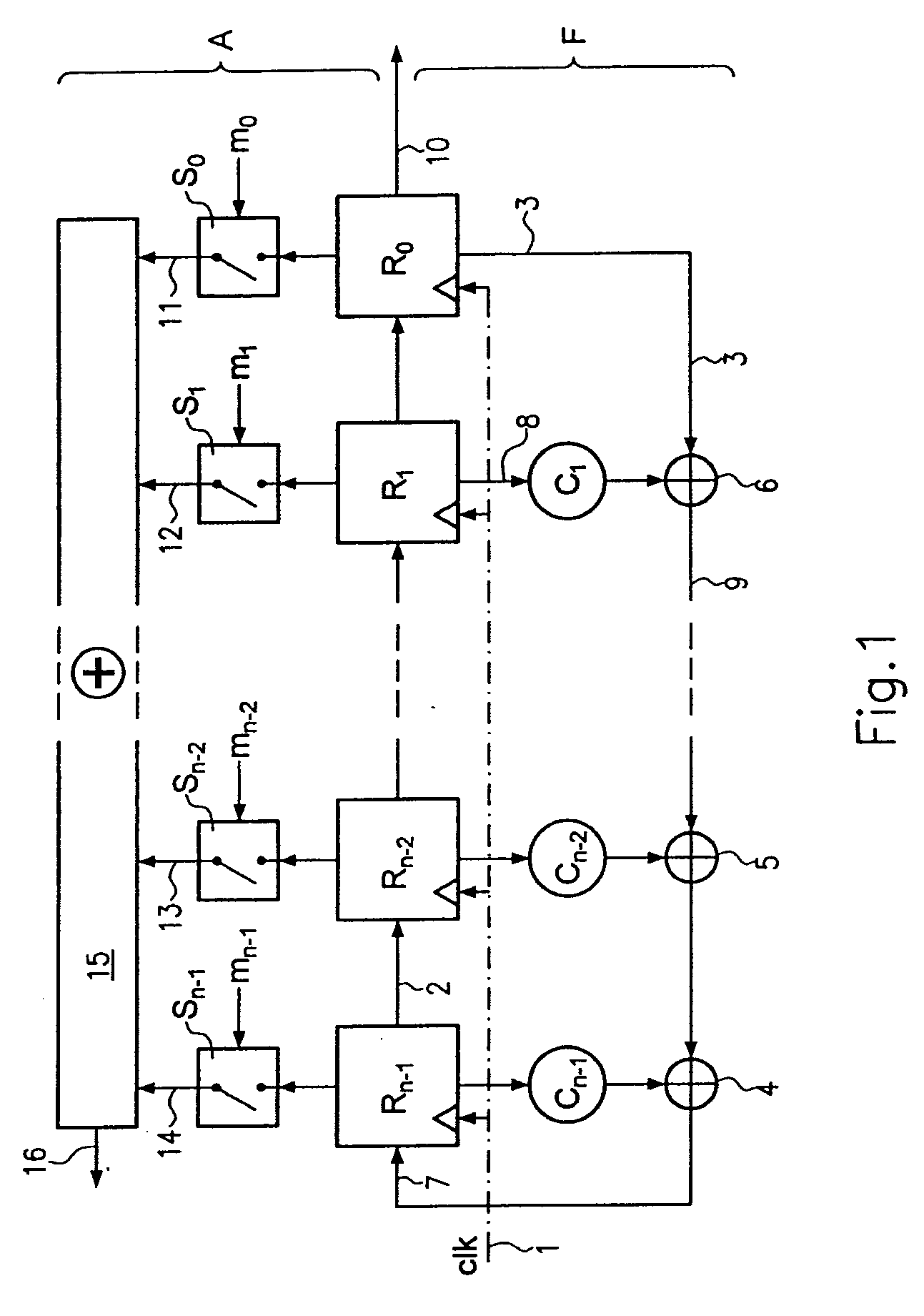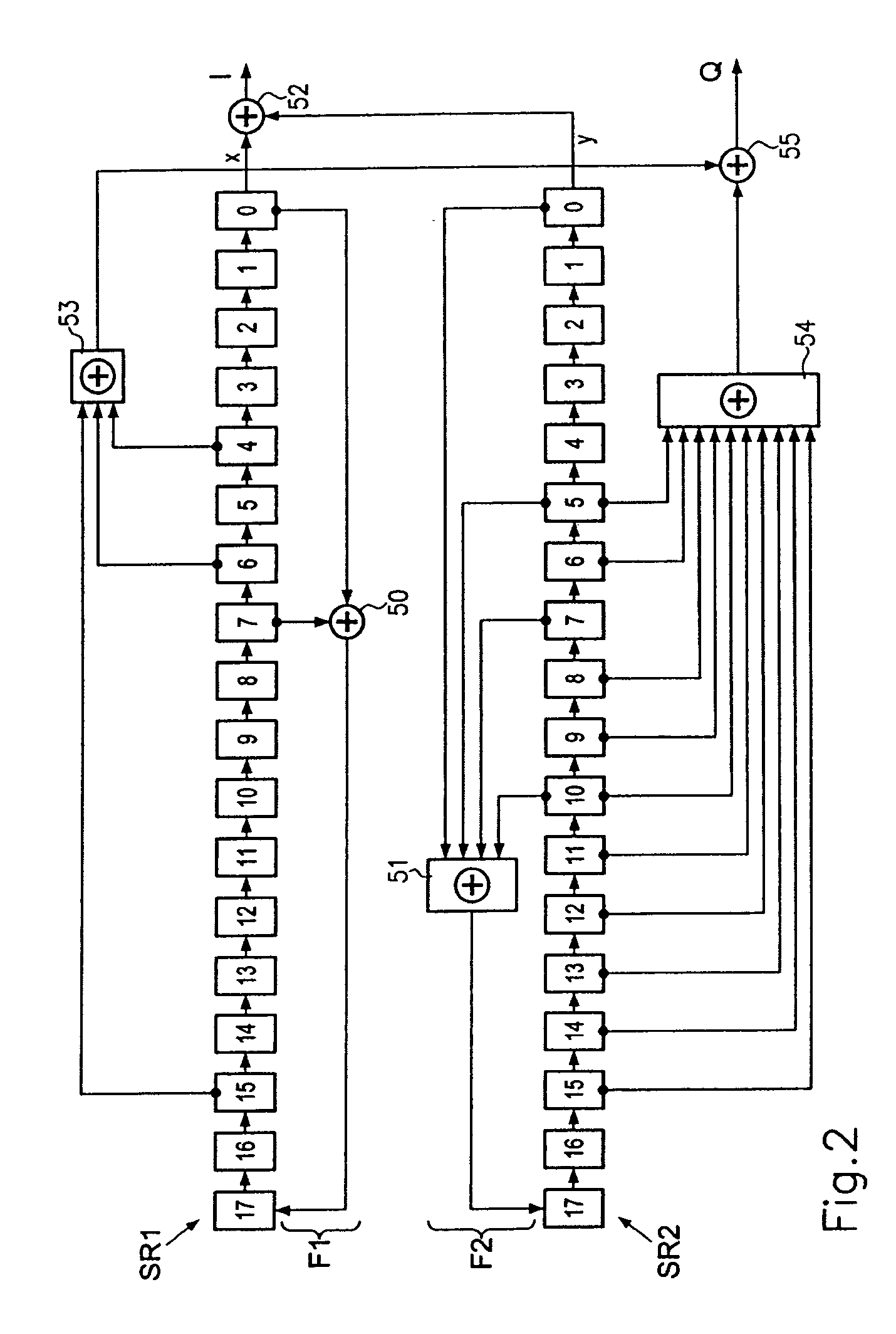Method and device for calculating an iterated state for a feedback shift register arrangement
- Summary
- Abstract
- Description
- Claims
- Application Information
AI Technical Summary
Benefits of technology
Problems solved by technology
Method used
Image
Examples
example no 3
is oriented to example No 1 in terms of group length L, but shifts up to a maximum of N-N′=15, i.e. the shifts in the 4th group (with the lowest value), are not included in the calculation of the tap mask, but rather are implemented in another way, e.g. as direct shift register operations. In this respect, in comparison with example 1, a number of 16 stored tap masks no longer apply, and instead of 3 only two mask multiplications need to be carried out. The tap mask m(x) calculated in the process corresponds to a shift of N′, where 0≦N-N′≦15.
example 3
, in which the entire shift “hybrid” is produced by direct shift register operations and polynomial multiplications, for example, is normally more favorable than example 1, since 15 shift register operations can be implemented in software or hardware with (even) less complexity than a polynomial multiplication.
Examples 4 to 7 are modifications of the examples explained up to now and are geared, in particular, to instances of application with limited memory resources. The 4 least significant bits b0, b1, b2, b3 in the 4th group are produced, as in example 3, by direct shift register operations and L indicates the group length of the remaining groups (which cover the remaining 12 bits).
example 7
with L=1 corresponds to the binary splitting basis while ignoring the 4 least significant bits in the 4th group. Only 12 tap masks need to be stored (namely one of each bit) in order to be able to deal with all shifts 0≦N≦65,535 (hybrid). However, 11 polynomial multiplications are necessary in order to calculate the tap mask for N′-fold iteration of the shift register arrangement while taking into account 0≦N-N′≦15 direct shift register operations.
The complexity for a mask multiplication is dependent on the implementation, which can be in hardware (i.e. in the form of a hardwired circuit) or in software. Software can be used to produce a mask multiplication for tap masks of length n using approximately 5·n elementary bit operations. In the example above (n=18), approximately 90 elementary bit operations would therefore need to be started for one mask multiplication.
Table 3 compares examples 4 and 5 with the methods known in the prior art (execution of shift register operations up...
PUM
 Login to View More
Login to View More Abstract
Description
Claims
Application Information
 Login to View More
Login to View More - R&D
- Intellectual Property
- Life Sciences
- Materials
- Tech Scout
- Unparalleled Data Quality
- Higher Quality Content
- 60% Fewer Hallucinations
Browse by: Latest US Patents, China's latest patents, Technical Efficacy Thesaurus, Application Domain, Technology Topic, Popular Technical Reports.
© 2025 PatSnap. All rights reserved.Legal|Privacy policy|Modern Slavery Act Transparency Statement|Sitemap|About US| Contact US: help@patsnap.com



